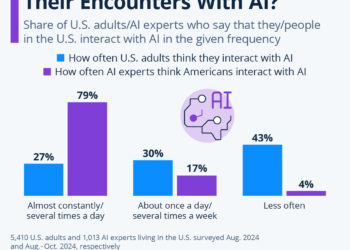In the fast-paced digital landscape, businesses need to stay ahead of their competitors. Artificial Intelligence (AI) competitive analysis tools have emerged as essential resources, allowing organizations to gain profound insights into market dynamics. These tools utilize advanced algorithms and data analysis techniques to provide marketers and business leaders with actionable intelligence.
What Are AI Competitive Analysis Tools?
AI competitive analysis tools are software solutions that leverage machine learning, natural language processing, and data mining techniques to assess competitors’ strategies, strengths, weaknesses, and overall market trends. They gather and analyze data from various sources, helping businesses make informed decisions.
Key Features of AI Competitive Analysis Tools
- Data Aggregation: Collects data from multiple online and offline sources to provide a comprehensive view of competitors.
- Real-Time Analytics: Offers up-to-date information to help organizations respond quickly to market changes.
- Sentiment Analysis: Evaluates customer feedback and public sentiment regarding competitors.
- Market Trend Forecasting: Predicts future market trends based on historical data and current patterns.
Benefits of Using AI Competitive Analysis Tools
Utilizing these tools provides several advantages for companies looking to refine their competitive strategies.
Enhanced Decision Making
- Data-Driven Insights: By analyzing vast amounts of data, these tools afford businesses the insights required to make strategic decisions.
- Identifying Opportunities: Tools can reveal unexploited market areas and emerging trends, enabling proactive strategy development.
Improved Competitive Intelligence
- Benchmarking: Enables users to measure their performance against competitors, identifying gaps and areas for improvement.
- Competitor Monitoring: Tracks competitors’ activities, including marketing campaigns, product launches, and pricing changes.
Time Efficiency
- Automated Reporting: Reduces the manual effort involved in collecting and analyzing data, freeing up time for strategic planning.
- Alerts and Notifications: Provides real-time alerts about significant changes or events in the competitive landscape.
Popular AI Competitive Analysis Tools
Several AI-powered tools stand out in the market, each offering unique features that cater to different business needs.
1. Crayon
- Overview: Crayon gathers competitive data across numerous channels, allowing companies to track competitors’ changes in real time.
- Features:
- Competitor tracking dashboards
- Automated competitive intelligence updates
- Market event alerts
2. SEMrush
- Overview: Primarily known as a digital marketing tool, SEMrush includes features for competitive analysis, particularly in the realm of SEO and online marketing.
- Features:
- Keyword gap analysis
- Domain vs. domain comparisons
- Traffic insights and behavior analysis
3. Owler
- Overview: Owler offers a comprehensive view of competitors through community-driven insights, allowing users to gain perspective from industry peers.
- Features:
- Competitor news and updates
- Company financials and metrics
- Custom alerts based on specific criteria
4. SimilarWeb
- Overview: This tool focuses on web traffic analytics, providing insights into website performance and competitor benchmarks.
- Features:
- Traffic and engagement metrics
- Audience demographics
- Referral sources analysis
Implementing AI Competitive Analysis Tools
To effectively leverage these tools, businesses should consider the following steps:
Define Objectives
- Identify Goals: Determine what specific insights are needed—be it market trends, competitor performance, or product comparisons.
Select the Right Tool
- Evaluate Features: Assess the tools based on their capabilities and how well they align with the defined objectives.
- Consider Usability: Ensure the tool is user-friendly and integrates well with existing processes.
Train and Adapt
- Employee Training: Invest time in training staff members to maximize the tool’s potential.
- Continuous Monitoring: Regularly analyze outputs and adjust strategies based on findings, fostering an agile and responsive business environment.
The Future of AI Competitive Analysis
As technology continues to evolve, AI competitive analysis tools are expected to become even more sophisticated. With advancements in AI and machine learning, these tools will offer deeper insights and more predictive capabilities. Organizations that adopt these innovations early will likely gain a significant competitive advantage in their respective industries.






